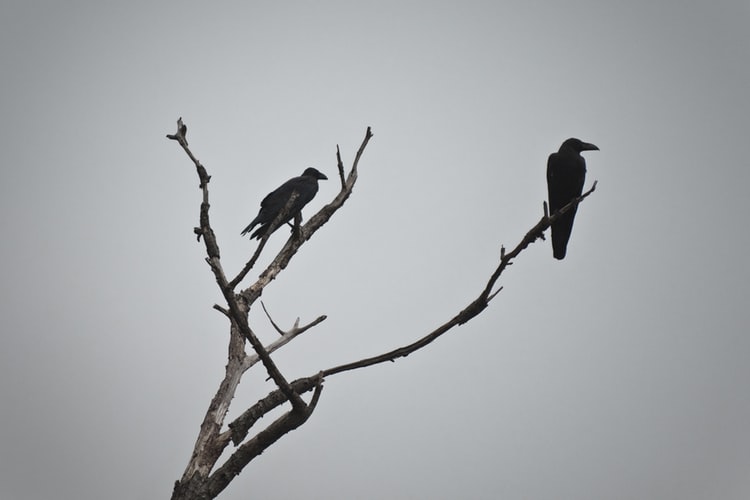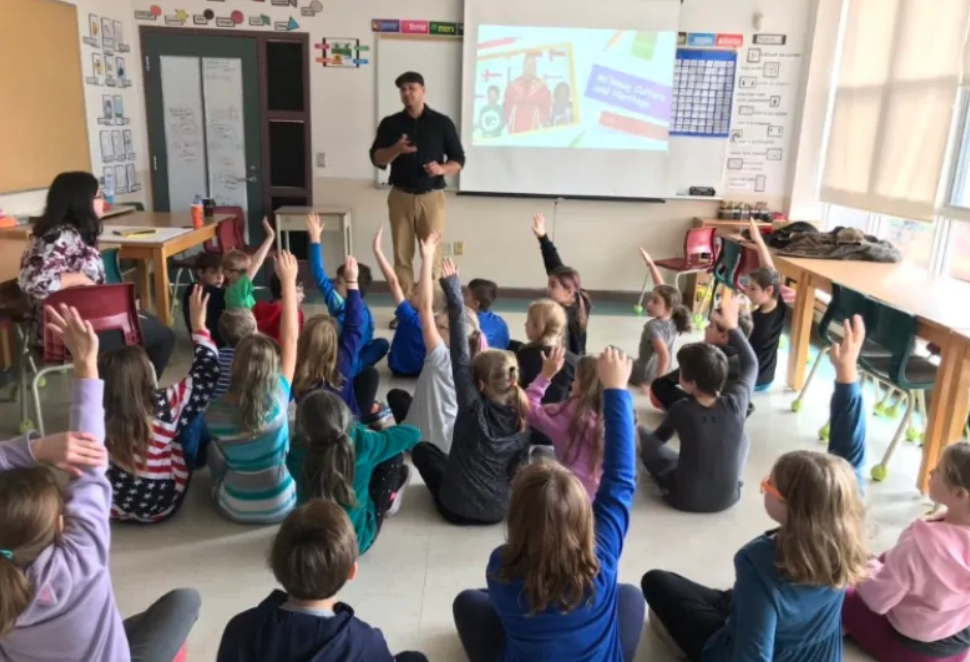Every Spring you get that email:
“Once again we have received reports of crows acting aggressively towards persons on campus…”
Crows are often the symbol of death, disease and bad omens, as well as considered a pest by farmers and by those who have their trash scavenged by the birds. While, the campus crows have become infamous for harassing students, they deserve a better reputation than they have gained.
Crows are classified as part of the Corvidae family along with ravens, magpies, and jays. Corvids are a family well known for the numerous observations of the birds displaying remarkably intelligent behavior. Although sometimes being exceptionally smart means they may also be incredibly weird, and occasionally a little aggressive
Using tools is a hallmark behavior that scientists look for when assessing the intelligence in different organisms, and corvids have a well-documented history of using the assistance of objects to obtain food in the wild and in captivity. While swooping in and snatching a muffin from an unsuspecting student is much easier, crows will use sticks or other tools to help them access food. Crows have even been shown to choose tools best suited to the task at hand when presented with multiple tools in a laboratory environment; choosing longer sticks when the first short stick they chose could not reach their target. Crows have been shown to understand basic concepts such as water displacement in experimental trials where they needed to use various tools to obtain a piece of water floating in a container that needed to have a certain number of stones added to it in order for the food to be close enough to the top of the container for the crow to reach it (video of the experiment here: https://www.youtube.com/watch?v=ZerUbHmuY04)
Corvids have also been recorded engaging what we recognize as play, with viral videos featuring crows playing in the snow popping up every winter (this one where the crow uses a makeshift sled in the snow is very cute, fyi: https://www.youtube.com/watch?v=tUBMSnHH7hc). Like humans, crow brains release endorphins, or ‘feel good’ hormones, when they engage in play. Playing also gives crows an opportunity to develop skills and sometimes establish dominance.
While mocking your sibling is a form of “play” in humans, crows, ravens and jays are all capable of mimicking, where they can copy and repeat a noise they have heard. This behavior is another display that often gets recorded by observers and goes viral online, with some crows completing phrases like the one featured in this video: https://www.youtube.com/watch?v=RB3ruxchwaY. Their vocal abilities are extensive, with numerous different calls (yes, they do make other noises other than the infamous caw), and even regional dialects. These dialects account for territorial differences and communicate to those of a different region to find another place to roost.
Now, with all that praise for the intellect of crows and their brethren, I understand why Corvids have such a bad reputation. Alfred Hitchcock’s movie The Birds made the mobbing behavior crows often engage in when they feel threatened infamous. This co-operative behavior keeps crows safe from larger birds of prey and other predators, but for an unsuspecting pedestrian accidentally entering crow territory, this defensive reaction is nothing less than terrifying. However, this behavior attests to the extremely social nature of the birds. In fact, they are so social they may even mourn the death of members of their flock. “Crow funerals” are a phenomenon that has piqued the curiosity of animal behavior scientists for a while. Crows will leave “gifts” to crow corpses, with observations of crows mobbing the scene of the death, leaving candy wrappers, sticks and other tokens for their fallen comrades. The weird side of crows is brought out during these “funerals”, because occasionally crows will engage in coitus with deceased crows (translation: crows will sometimes fuck other dead crows).
As part of their social side, corvids are noted for their capacity to recognize individuals, including themselves, with magpies being among the few species proven to be able to recognize themselves in the mirror. If you have been a victim of a campus crow, I may have some bad news for you: crows are also able to recognize human faces. A study was executed with a researcher testing the theory of facial recognition in crows using masks. Researchers wore one mask to capture crows- making this mask “dangerous”. Another mask was worn while researchers did not bother the crows- to make this mask “neutral”. Crows would harass researchers wearing the “dangerous” mask walking on campus, while leaving the “neutral” mask-wearing researchers alone. So, if you were harassed by campus crows and reacted violently, they may recognize you as a violent person and avoid you, or they may hold a grudge. Watch out.
Although the fascinating nature of crows makes them a very easy defense case, any species should be respected. Crows are a species that can largely attribute its success to their proximity to humans and the interactions that occur between us. We as students must understand that urban wildlife is a part of our environment, and we share our space with them. This understanding is key to avoiding humans clashing and conflicting with other species. Personally, I’ve never had any negative encounters with campus crows, but I also avoid doing the following:
- Carrying food on campus
- Harassing the crows
- Entering an area, I know the crows frequent
Co-existing with urban wildlife can be filled with conflict, but the onus is on us to keep our distance and let nature take its course; even if sometimes that means an occasionally muffin-carrier accidentally discovers where a crow has decided to claim stake. Stay safe, and maybe do some crow watching some time.





